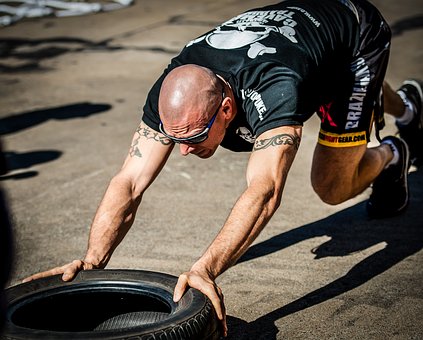Welcome to this series of articles about Senior Wellbeing. As we grow older, there are many things we can do to ensure that “Golden Years” are indeed golden.
Physical fitness is the ability to function effectively throughout your workday, perform your usual other activities and still have enough energy left over to handle extra stresses or emergencies which may arise.
The components of physical fitness are:
Cardiorespiratory (CR) endurance – the efficiency with which the body delivers oxygen and nutrients needed for muscular activity and transports waste products from the cells.
- Muscular strength – the greatest amount of force a muscle or muscle group can exert in a single effort.
- Muscular endurance – the ability of a muscle or muscle group to perform repeated movements with a sub-maximal force for extended periods of times.
- Flexibility – the ability to move the joints or any group of joints through an entire, normal range of motion.
- Body composition – the percentage of body fat a person has in comparison to his or her total body mass.
Improving the first three components of fitness listed above will have a positive impact on body composition and will result in less fat. Excessive body fat detracts from the other fitness components, reduces performance, detracts from appearance, and negatively affects your health.
Factors such as speed, agility, muscle power, eye-hand coordination, and eye-foot coordination are classified as components of “motor” fitness. These factors most affect your athletic ability.
Appropriate training can improve these factors within the limits of your potential. A sensible weight loss and fitness program seeks to improve or maintain all the components of physical and motor fitness through sound, progressive, mission specific physical training.

Principles of Exercise
It is important to stick to basic exercise principles for an effective program. The same principles of exercise apply to everyone at all levels, from the Olympic-calibre athlete to the weekend jogger.
These basic principles of exercise must be followed.
Regularity
You must exercise often to achieve a training effect. You should exercise each of the first four fitness components at least three times a week. Infrequent exercise does more harm than good. Regularity is also important in resting, sleeping, and following a sensible diet.
Progression
The intensity (how hard) and/or duration (how long) of exercise must gradually increase to improve the level of fitness.
Balance
To be effective, a program should include activities that address all the fitness components, since overemphasizing any one of them may hurt the others.
Variety
A variety of activities reduces boredom and increases motivation and progress.
Specificity
Training must be geared toward specific goals. For example, people become better runners if their training emphasizes running. Although swimming is great exercise, it does not improve a 2-mile-run time as much as a running program does.
Recovery
A hard day of training for a given component of fitness should be followed by an easier training day or rest day for that component and/or muscle group(s) to help permit recovery. Another way to allow recovery is to alternate the muscle groups exercised every other day, especially when training for strength and/or muscle endurance.
Overload
The work load of each exercise session must exceed the normal demands placed on the body in order to bring about a training effect.

For more blogs please go to www.NicksDigitalSolutions.com and choose Nicks blog.
For E-Learning material, please go to www.NicksDigitalSolutions.com and choose E-Learning Shop and, in particular, the Seniors or Pathways to Success options.
Nick Thorne is the founder of NicksDigitalSolutions Limited a company that specialises in Education, Training and Writing. He lives in Levin, New Zealand.
